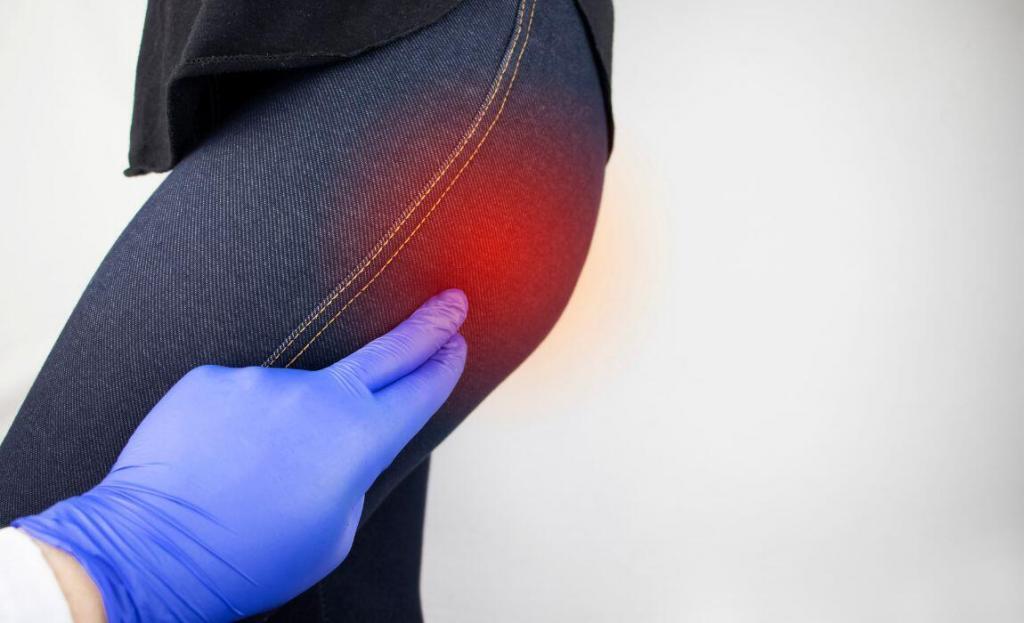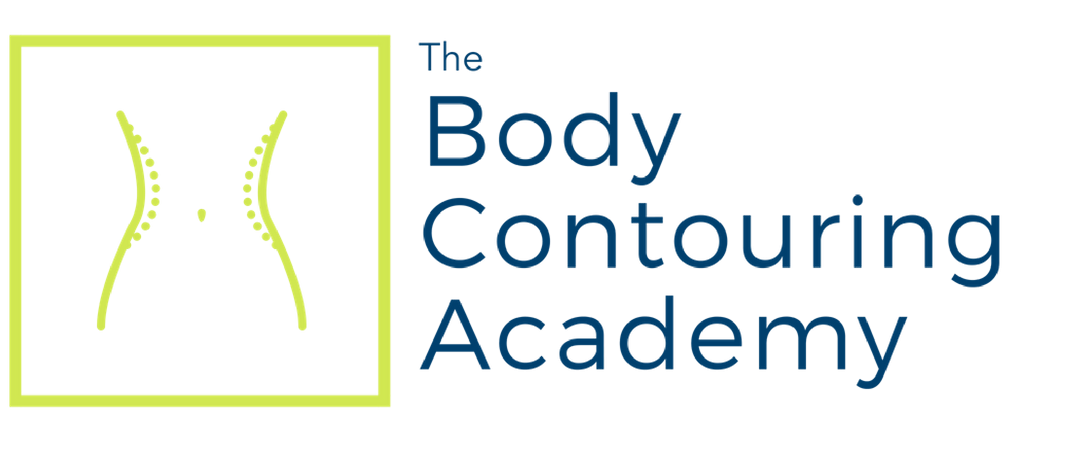What is gluteal amnesia, dead butt syndrome, and flat butt syndrome?

Right now, you’re most likely sitting. Either at your desk, your dining table or sofa. For many reasons, most of us lead sedentary lives. Your clients included. We know the risks of sitting all day; we’ve discussed how it directly impacts our fat reduction results. But what about butt sculpting? What happens to our client’s booties when they sit all day? Well…their glutes can forget what to do. Our clients can develop gluteal amnesia, dead butt syndrome, flat butt syndrome, pancake butt. Funny names, right? But they describe a very serious gluteal condition that can prevent them from getting the butt they want with our non-invasive butt lift treatments.
In this article, you’ll learn
- The function of the 3 primary gluteal muscles
- How much damage a sedentary lifestyle can do: how the problems of gluteal amnesia, dead butt syndrome develop
- Gluteal amnesia, dead butt syndrome, flat butt syndrome, pancake butt
- How to prevent, and even reverse, gluteal amnesia, dead butt syndrome
Understanding the 3 gluteal muscles and their functions
Gluteus Maximus
- Largest and most superficial of the 3 gluteal muscles
- Lies over top of the gluteus medius and gluteus minimus muscles
- Gives rise to the shape to the buttocks…which is why this muscle is very important in the body contouring world
- Runs at a 45 degree diagonal slope (covering most of each buttock) from the sacrum (bone at the base of the vertebrae) laterally across each buttock to an area just below the trochanter on the femur
- You use your gluteus maximus with any movement that takes your leg backward and/or out to the side of your body
- Lack of exercise (or under utilizing) the gluteus maximus muscle causes it to weaken and can lead to lower back pain, hip pain and stability issues
- When this large muscle is weakened due to inactivity, it causes strain on smaller, weaker muscle that must compensate to move the body
- The symptoms of dead butt syndrome, gluteal amnesia are most pronounced with this large muscle
- Over working the gluteus maximus muscle can lead to muscle strain, tears or overstretching injury
Gluteus Medius
- Located underneath the gluteus maximus muscle on the side of the hip
- Originates at the hip bone (at the side of the body) and runs downward narrowing along the way until it ends by attaching to the trochanter (head of the femur)
- From a side view, the gluteus medius has a fan shape (wider at top) with a narrow ‘stem’ at the base
- Works with the gluteus minimus to support the hip
- Works with other hip muscles to move the leg out to the side and to rotate the thigh
- Has a great impact on pelvic stability
PRO TIP: The gluteus medius is very important in walking. When standing on just one leg and holding the other leg in the air, it’s the gluteus medius muscle that keeps the pelvis balanced. Try it and see how strong your gluteus medius feels
- A weakened or under utilized gluteus medius muscle is often blamed for the initial changes that lead to gluteal amnesia, dead butt syndrome
- Overworking type injuries of the gluteus medius muscle are rare
Gluteus Minimus
- Triangular in shape and lies underneath the gluteus medius near the hip joints
- Starts at the top of the hip bone and runs down to connect to the femur
- The gluteus minimus is shaped like a fan, just like the gluteus medius
- Works to pull the leg up, to swing the leg out away from the body…and (with the help of the gluteus medius) to pull the leg inward toward the middle of the body
- Works with the gluteus medius to stabilize the pelvis
- Overworking type injuries can occur with the gluteus minimus, the most common of which is called greater trochanteric pain syndrome
How much damage can a sedentary lifestyle do?
How gluteal amnesia, dead butt syndrome develops
Our bodies are not designed to sit for long periods of time. So when our clients have to be seated for hours a day, it’s going to lead to issues.
As far as sitting goes, the problems with the glutes start with the lack of activity and stimulus.
- All 3 of the gluteus muscles weaken by hours of being in the seated position
Then the process of reciprocal inhibition kicks in.
- This process describes the give-and-take relationship between muscles on either side of a joint. In this case, the hip joint.
- When one muscle contracts, a nerve signal is sent to the muscle on the opposing side to relax.
- So when your clients have spent hours sitting, their hip flexors are contracting while their glutes are at rest. (Hip flexor muscles run from the lower back to the front of the thigh. The hip flexor brings the leg in an upward motion, like in the sitting position.)
- When this occurs over time, the glutes are trained to be weak.
- And over a longer period of time, the glutes forget what to do.
Everything is connected. So when the glutes have become weak and have forgotten their function, other muscles work harder to compensate for the weak glutes. This can cause symptoms like back pain, knee pain, balance issues, tight hips and foot pain.
Weakened glute muscles that lose the memory of their function also lose mass and change in shape and appearance over time.
- The buttocks can develop a flattened, flabby, and irregularly shaped appearance.
- The buttocks no longer maintain their shape, lift, and curvature.
What exactly are these conditions?
gluteal amnesia, dead butt syndrome, flat butt syndrome, pancake butt
Gluteal Amnesia
- This term is the more technical name used to define the condition in which the client has lost the ability over time to contract her gluteus muscles, specifically the gluteus maximus and the gluteus minimus
- The glute muscles ‘go to sleep’ and lose memory of their function
- The glute muscles forget how to work
- Many other names can be and are used to define this condition
- Sleeping butt
- Dormant butt
- Sleeping glutes
- Gluteal tendinopathy
- Dead butt
- Lazy butt
- Dormant butt syndrome
- Flat butt syndrome
Dead Butt Syndrome
- The most common name given the condition of gluteal amnesia
- It does not mean the glutes are ‘dead’
- It means the glute muscles are not working
- Just like gluteal amnesia, dead butt syndrome happens when our clients are sitting too long and their butts have literally ‘forgotten what to do’
Physical Therapists treat many clients with dead butt syndrome and explain, “the sustained flexed position of the hip and compression of the (gluteal) tissues sets up for the perfect storm of shutting down glute function.”
Flat Butt Syndrome
- There’s no mistaking flat butts
- Genetics plays a role in whether your client has a flat shaped butt
- But gluteal amnesia also can cause a flat butt
- A flat butt can be an indicator of gluteal amnesia
- That’s why flat butt syndrome can be another name used to describe the condition of gluteal amnesia, dead butt syndrome
Pancake Butt
- A pancake butt is a flat butt that has lost its underbutt (An underbutt is a term used to describe the lower curve of the buttocks that divides the base of the butt from the top of the thigh)
- Caused by a loss of fat and muscle in the butt
- Pancake butt, in and of itself, is not related to gluteal amnesia, dead butt syndrome
- Most commonly seen in post-menopausal women
- But pancake butt can be an indicator of gluteal amnesia, dead butt syndrome
How to Prevent (and help Reverse) gluteal amnesia, dead butt syndrome
- Gluteal amnesia, dead butt syndrome is a condition that must be diagnosed by a physician, and treated by a physical therapist
- Body contouring professionals must have a thorough understanding of gluteal amnesia, dead butt syndrome
- Body contouring professionals should recognize a client who may be at risk for developing the condition – or – a client who has symptoms of having the condition
Steps to prevent (and help reverse) gluteal amnesia, dead butt syndrome
1 Proper posture
- Sitting up straight can help to counter the effects of prolonged sitting
2 An ‘exercise break’ each hour
- For each hour of sitting, your client should get up and move for 5-10 minutes to reactivate and keep the gluteus muscles from falling asleep
- Standing, walking around, stretching, pacing during a phone call are some examples
3 Exercise while seated
- While your client is seated at work or while driving in a car, she can do these exercises while seated to stimulate blood flow, work the glute muscles, lengthen tight areas, and wake a ‘dead butt’
- Glute squeezes
- Hamstring stretches
- Click here to get instructions for these two exercises
4 Stretch daily (unrelated to a workout)
- Target the chest, shoulder, hips and hamstrings (the muscle groups that get shortened by prolonged sitting)
5 Avoid sleeping in the fetal position
- Sleeping in the fetal position increases the risk of gluteal amnesia, dead butt syndrome
- The fetal position shortens weakens the glutes by shortening the hip flexors and lengthening the gluteus muscles
6 Take the stairs
- Going up and down stairs is one of the easiest ways to work the gluteus muscles
Visit www.bodycontouringacademy.com for more information about how to get the best non-invasive body contouring results for your clients.
